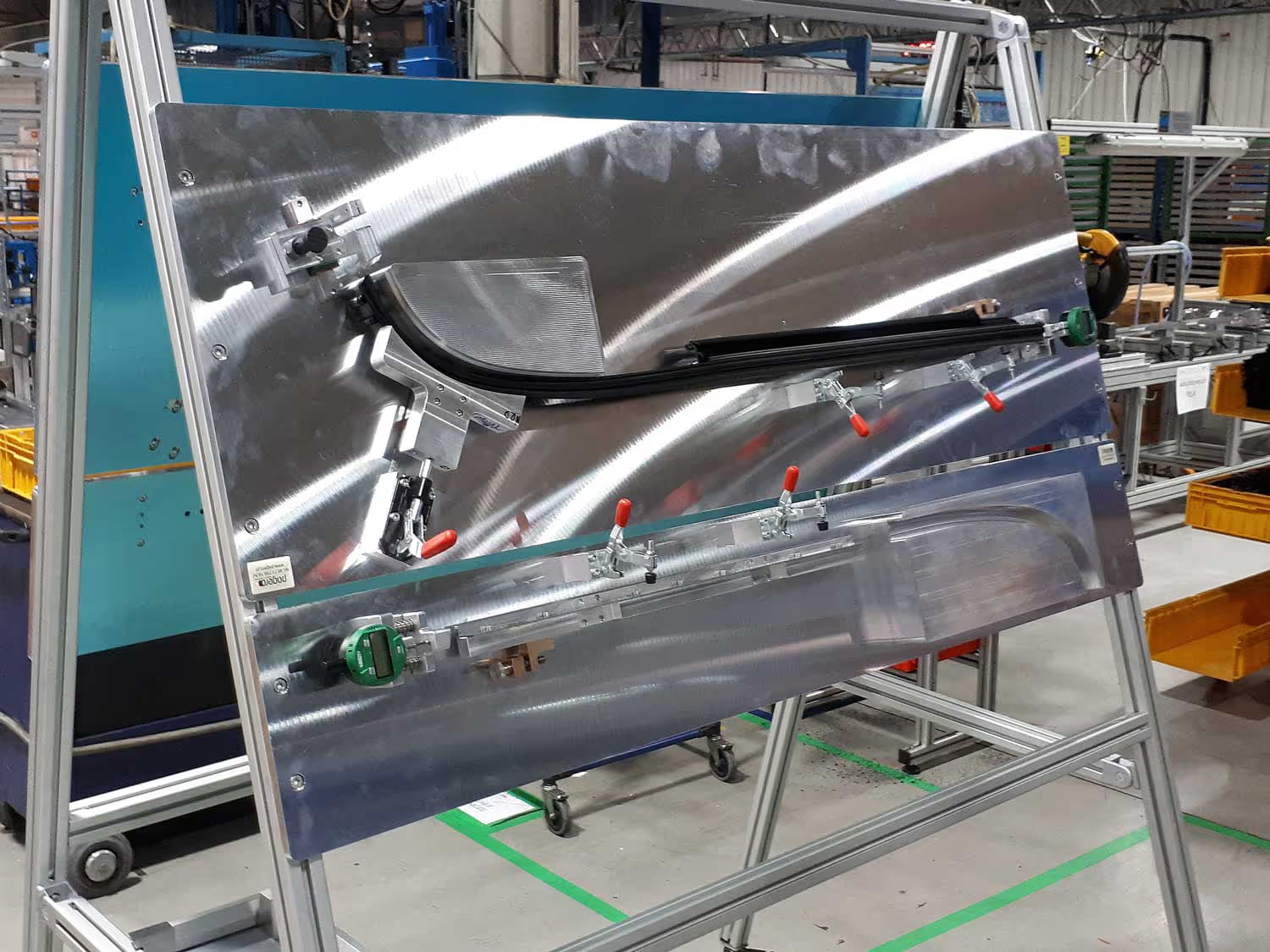


Cooper Standard is a leading global supplier in the automotive industry, specialising in the design and manufacture of sealing systems for vehicle bodies. The company is recognised for its commitment to quality and for meeting the complex geometric requirements of major automotive manufacturers.
The implementation of custom manual inspection instruments has delivered significant benefits for Cooper Standard, including:
Cooper Standard required a solution that would:
The client needed equipment capable of verifying the geometry of car body seals, which presented several challenges. The seals were large (approximately 1 m), possessed complex shapes dictated by vehicle body geometry, and had low stiffness, making them highly susceptible to buckling and deformation. Achieving the required precision under these conditions demanded a custom solution that went beyond standard measurement tools.
A set of custom manual instruments was designed and manufactured. The core of the solution involved creating fixtures that replicate the seal's environment within the car body. The instruments are built to reflect the shape of doors, side pillars, and even windows, providing complete support to the sealing element. This design eliminates the risk of deformation during inspection, allowing operators to accurately control the bending shape, cutting angles, and overall length of each seal.
To ensure ease of use and support high-volume production where every seal is controlled, the instruments were designed to be ergonomic and minimise operator effort. Furthermore, each control device is equipped with a dedicated calibration element made from wear-resistant materials, guaranteeing that the instruments maintain their accuracy of +/- 0.1 mm relative to the 3D model.

The devices enable the verification of complex seal geometry with an accuracy of +/- 0.1 mm.
The custom design, which replicates the car body environment, ensures that seals are measured accurately without deformation.
The ergonomic and efficient design allows for the quality control of every seal produced, ensuring consistent output.
The inclusion of dedicated, wear-resistant calibration elements guarantees consistent and repeatable measurement results.
Lorem ipsum dolor sit amet, consectetur adipiscing elit, sed do eiusmod tempor incididunt ut labore et dolore magna aliqua. Ut enim ad minim veniam, quis nostrud exercitation ullamco laboris nisi ut aliquip ex ea commodo consequat. Duis aute irure dolor in reprehenderit in voluptate velit esse cillum dolore eu fugiat nulla pariatur.
Block quote
Ordered list
Unordered list
Bold text
Emphasis
Superscript
Subscript